Japan
Discover Japan
Japan, a captivating country in East Asia, is known for its unique blend of tradition and modernity. With a rich history and vibrant culture, Japan offers visitors a plethora of experiences. From the bustling city life of Tokyo to the serene landscapes of Kyoto, there’s something for everyone. The country’s renowned cuisine, including sushi, ramen, and tempura, is a culinary delight for food enthusiasts. Moreover, Japan’s fascinating customs, such as the traditional tea ceremony and the art of bonsai, showcase its deep- rooted cultural heritage.

Exploring Japan also unveils its technological advancements, evident in the bullet trains and futuristic cityscapes. The colorful cherry blossoms in spring and the stunning autumn foliage add to the country’s natural allure. With its unique charm, Japan has established itself as a top travel destination, offering a perfect blend of ancient traditions and modern innovations.
Japanese Flag
Symbol of the Nation
The Japanese flag, commonly known as the “Nissh ki” or “Nihon no hata,” is a powerful symbol that represents the Land of the Rising Sun. The simple design of a red circle on a white background holds deep cultural and historical significance, embodying the national identity and spirit of Japan.

Historical Legacy
The origins of the Japanese flag date back to ancient times and are intertwined with the country’s rich history and heritage. With roots in the 7th century, the flag has evolved over the centuries, mirroring the changing political and cultural landscape of Japan.
Meaning and Representation
The simplicity and elegance of the Japanese flag hold profound meaning. The circle, known as the “Hinomaru,” symbolizes the sun, radiating warmth, power, and enlightenment. The minimalist design embodies the essence of Japan’s core values and traditions.
Map of Japan
Japan, a beautiful island nation in the Pacific Ocean, has a rich history and diverse landscapes. The map of Japan showcases the unique shape of the archipelago, comprising four main islands – Honshu, Hokkaido, Kyushu, and Shikoku, along with numerous smaller islands. From the bustling metropolitan areas to the serene countryside, Japan’s map highlights the varied topography and regions, each with its distinctive culture and attractions.

The map also encompasses the intricate network of transportation, including bullet trains, highways, and local roads, connecting the different regions. It serves as a visual guide for travelers, offering a glimpse into the fascinating destinations that await exploration across the enchanting land of the rising sun.
Currency of Japan
Yen
The official currency of Japan is the yen, denoted by the symbol ¥. It is widely recognized as one of the world’s most widely traded currencies. The Bank of Japan is responsible for issuing and regulating the yen, and it is used not only in Japan but also serves as a reserve currency in various countries.
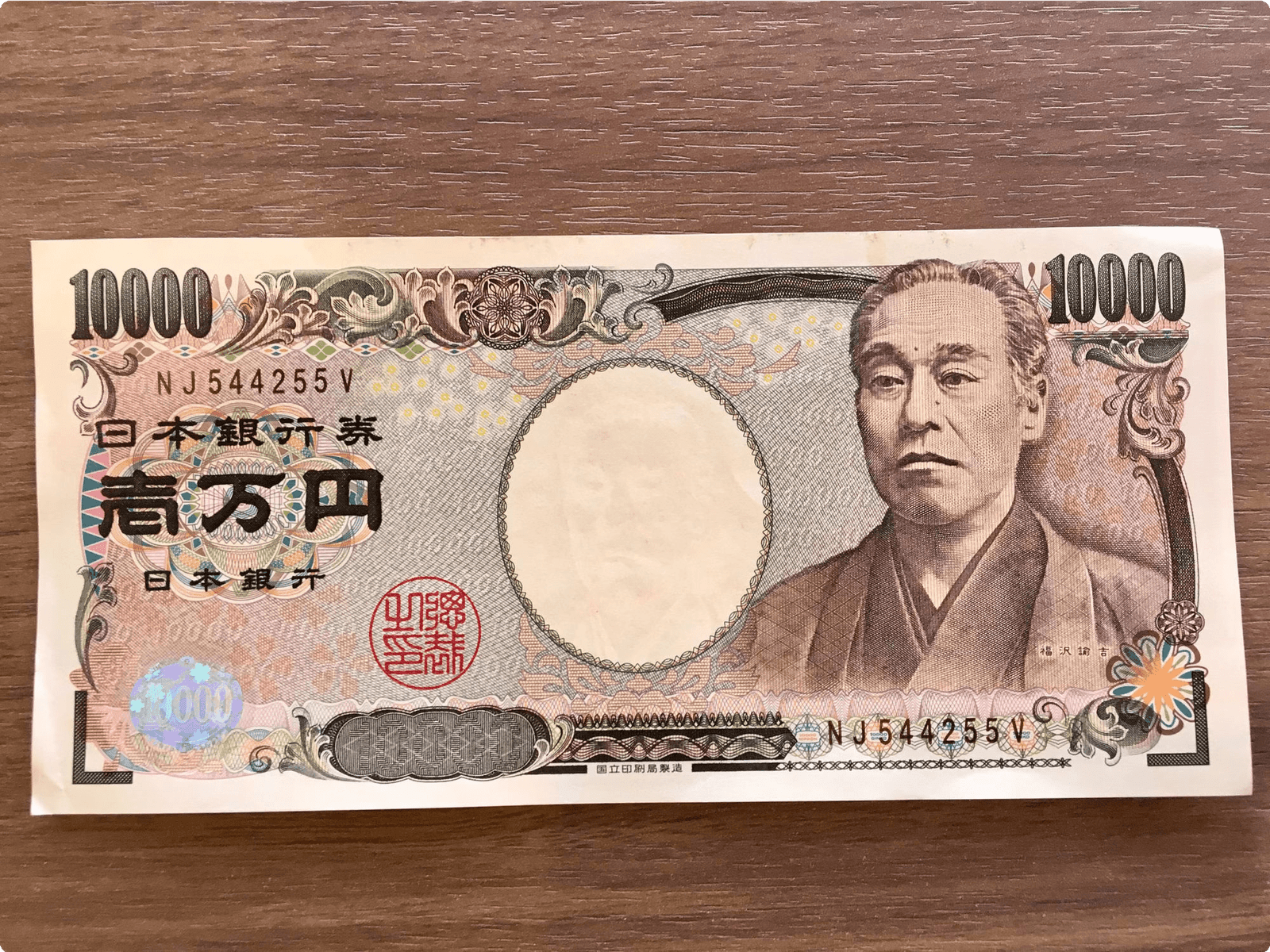
Coinage
Yen banknotes come in various denominations, with coins also being in circulation. The coins are available in denominations of ¥1, ¥5, ¥10, ¥50, ¥100, and ¥500. Each coin features intricate designs and is an essential part of everyday transactions in Japan.
Exchange Rates
Exchange rates for the yen fluctuate based on international trading conditions. It plays a significant role in the global foreign exchange market, impacting international trade and finance. Fluctuations in exchange rates can have a direct impact on industries and businesses worldwide.
Digital Currency
Japan is a leading adopter of digital currencies, with many businesses accepting cryptocurrencies like Bitcoin as a means of payment. The forward-thinking approach to digital currency has positioned Japan as a pioneer in the evolution of finance and technology.
Economy of Japan
GDP: Japan has the third-largest economy in the world, with a GDP exceeding $5 trillion. It is a major player in the global economy, particularly in the automotive and electronics industries.
Employment: The employment rate in Japan is impressively high, with a low unemployment rate of around 2.8%. The country is known for its strong work ethic and dedication to productivity.
Exports: Japan’s export industry is a cornerstone of its economy, with high-quality products such as automobiles, electronics, and machinery being in high demand worldwide.
Technology: Japan is at the forefront of technological innovation, with companies like Sony, Toyota, and Nintendo leading the way in electronics, automotive, and gaming technology.
Japanese Culture
Traditional Clothing
One of the most iconic aspects of Japanese culture is the traditional clothing, such as the kimono and yukata. These garments are often worn during special occasions like weddings, tea ceremonies, and other cultural events. The intricate designs and vibrant colors of these outfits reflect the rich history and customs of Japan.
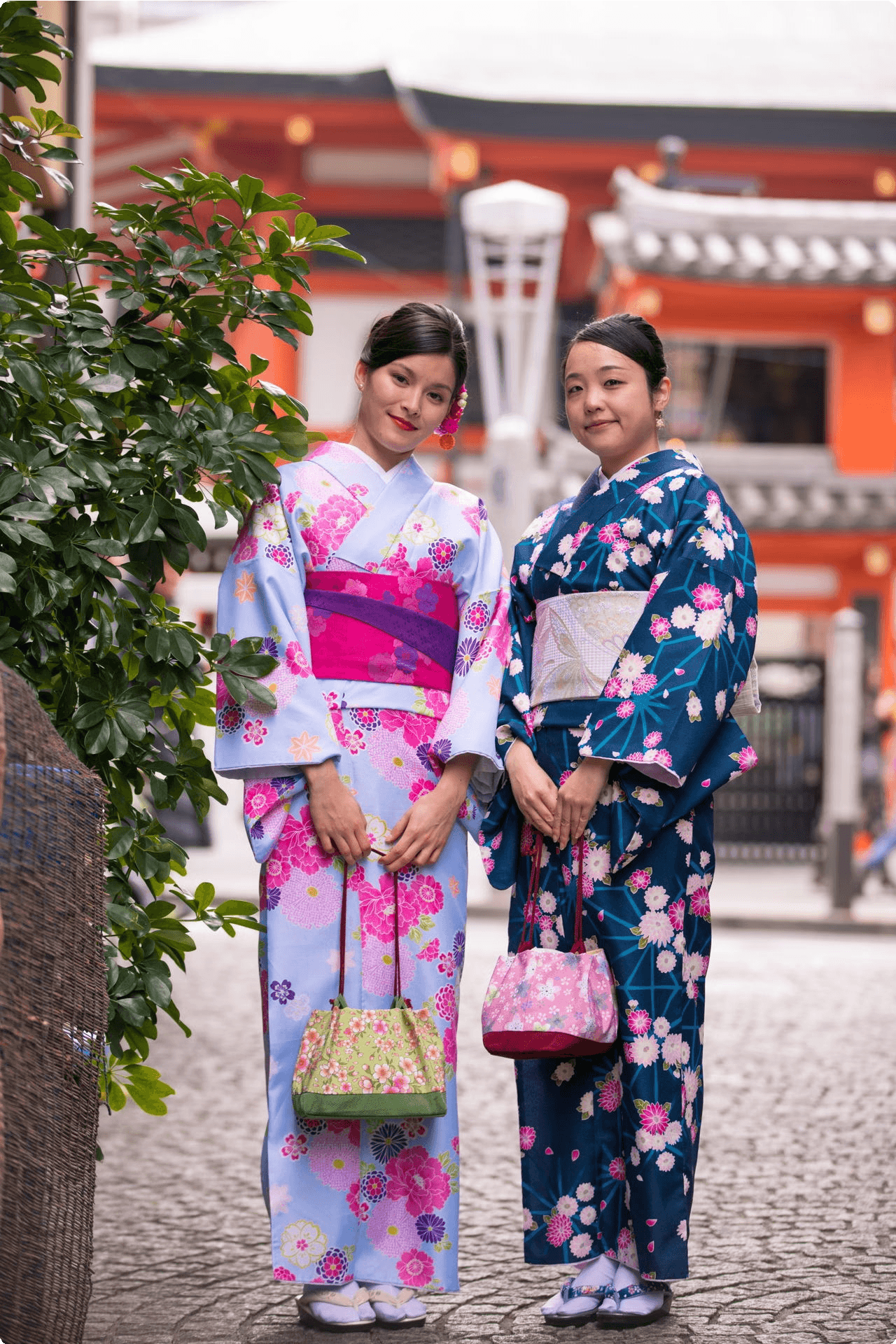
Tea Ceremonies
Tea ceremonies, known as “sado” or “chanoyu”, are highly ritualized events in Japanese culture. They emphasize spirituality, mindfulness, and respect for others. The preparation and consumption of matcha (powdered green tea) in a traditional tea house involve precise movements and etiquette.
Art & Aesthetics
Japanese culture is known for its appreciation of art and aesthetics, evident in practices such as flower arranging (ikebana) and ink painting (sumi-e). The concept of “wabi-sabi”, finding beauty in imperfection and impermanence, permeates various aspects of Japanese art and design.
Traditional Japanese dance
Traditional Japanese dance, known as Nihon Buyo, is a captivating art form that encompasses a wide range of styles and techniques. It is deeply rooted in Japan’s rich cultural heritage and has been passed down through generations, preserving its inherent beauty and grace.

Nihon Buyo incorporates elegant movements, elaborate costumes, and intricate gestures, often depicting historical tales, folklore, and even natural elements. Each dance performance tells a story and evokes a profound sense of tradition and artistry.
Entwined with elements of theater, music, and poetry, Nihon Buyo celebrates the essence of Japanese aesthetics and storytelling, making it a mesmerizing experience for both performers and audiences alike.
Japanese Food
Sushi
Sushi is a well-known Japanese dish consisting of vinegar-seasoned rice, usually with some sugar and salt, combined with a variety of ingredients such as seafood, vegetables, and occasionally tropical fruits. The most common types of sushi include nigiri, maki, and sashimi, offering a delightful combination of flavors and textures.

Ramen
Ramen is a popular Japanese noodle soup dish. It consists of Chinese-style wheat noodles served in a meat or fish-based broth, often flavored with soy sauce or miso, and topped with various ingredients such as sliced pork, seaweed, green onions, and a soft-boiled egg. Each region in Japan offers its own unique take on this beloved comfort food.

Tempura
Tempura is a classic Japanese dish featuring seafood or vegetables that are coated in a light batter and deep-fried to crispy perfection. The result is a delightful combination of textures and flavors, with the crispy exterior contrasting with the tender, flavorful interior of the ingredients.
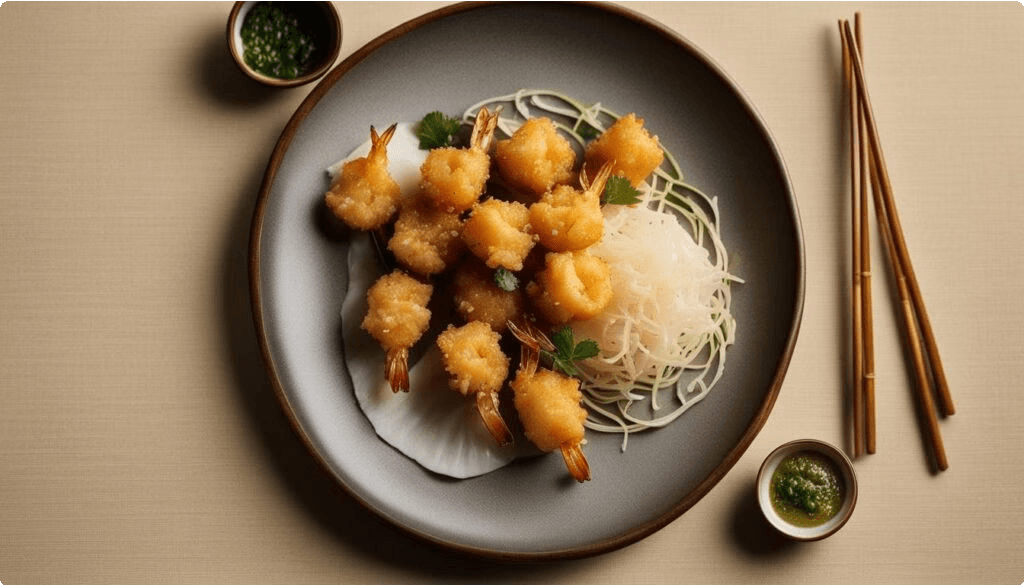
Okonomiyaki
Okonomiyaki is a savory pancake that originated in Japan. The name “okonomiyaki” means “grilled as you like it,” and it’s made with a batter of flour, grated yam, eggs, shredded cabbage, and various additional ingredients such as pork, shrimp, or octopus. This delicious dish is often topped with a sweet and savory sauce, mayonnaise, and bonito flakes.
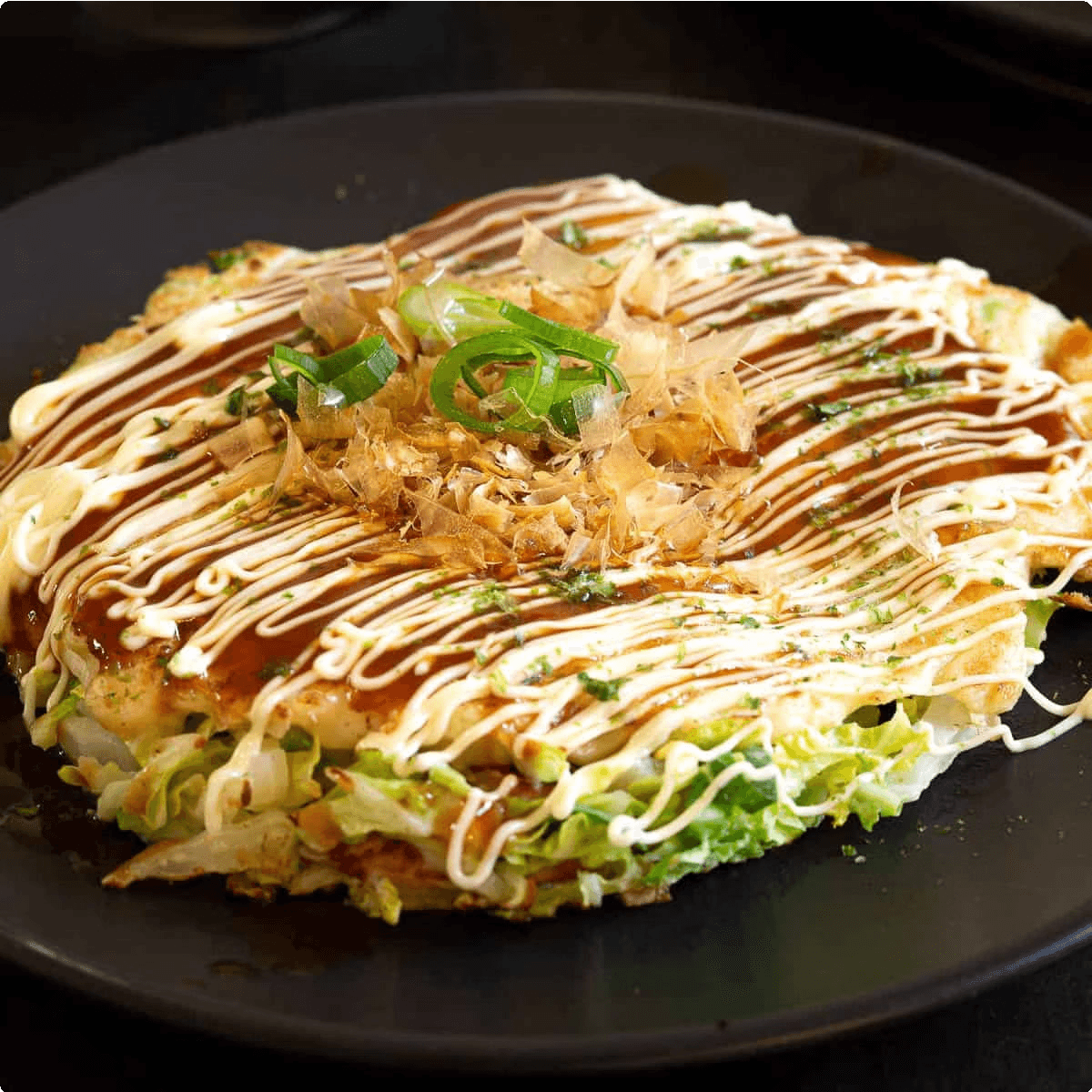
Anime in Japan
Anime, a popular form of entertainment originating from Japan, has deeply embedded itself in modern culture. The word “anime” is derived from the English word “animation” and typically refers to a specific style of Japanese animation. With its wide range of genres, from action and adventure to romance and fantasy, anime appeals to diverse audiences globally.

Japanese anime has gained immense popularity for its intricate storytelling, unique art styles, and vibrant characters. It has significantly contributed to the country’s tourism industry, with fans from around the world traveling to Japan to experience the birthplace of their favorite anime series.
The impact of anime extends beyond entertainment, as it influences fashion, music, and even food trends. From iconic series like “Naruto” and “Dragon Ball” to critically acclaimed films like “Spirited Away,” Japan’s anime industry continues to captivate audiences of all ages.
The artistic expression and creativity found in Japanese anime make it an essential component of the country’s cultural identity, showcasing its ability to captivate and inspire audiences globally.
Famous Celebrities from Japan
Nana Komatsu: Nana Komatsu is a talented Japanese actress known for her captivating performances in films such as “Silent Voice” and “Drowning Love”. With her versatile acting skills and natural beauty, she has gained recognition both in Japan and internationally.

Hayao Miyazaki: Famed film director, producer, screenwriter, and animator, known for founding the renowned Studio Ghibli. Miyazaki’s prolific career includes iconic animated films like “Spirited Away”, “My Neighbor Totoro”, and “Princess Mononoke”.

Hidetaka Miyazaki: Renowned video game director and designer, best known for creating the challenging and critically acclaimed “Dark Souls” series and “Bloodborne”. His unique approach to game design has earned him a dedicated global fanbase.

Ken Watanabe: Esteemed actor known for his roles in both Japanese and Hollywood films. Watanabe garnered widespread attention for his compelling performances in “The Last Samurai”, “Inception”, and “Letters from Iwo Jima”.

Ayumi Hamasaki: Renowned singer, songwriter, and actress, Ayumi Hamasaki is one of Japan’s most successful and influential pop stars. Known for her powerful vocals and captivating performances, she has released numerous chart-topping albums and singles.

Best Transportation Options in Japan
Shinkansen Bullet Train
The Shinkansen, also known as the bullet train, is one of the most efficient and iconic transportation options in Japan. With speeds reaching up to 200-300 km/h, it offers a rapid and comfortable way to travel between major cities.

Metro and Subway Systems
Japan’s extensive and well-maintained metro and subway systems are a convenient way to navigate within cities. They are known for their punctuality, cleanliness, and ease of use, making them a preferred mode of transportation for locals and tourists alike.
Rental Bicycles
Many cities in Japan offer bicycle rental services, providing an eco-friendly and enjoyable way to explore local neighborhoods. Cycling paths and lanes are prevalent, offering a unique perspective of the city’s charm and culture.
Best cities to visit in Japan
Tokyo
Capital city with a unique blend of modern and traditional culture
Kyoto
Ancient city known for its stunning temples, shrines, and traditional geisha district
Osaka
Lively city famous for its street food, vibrant nightlife, and historic castle
Hiroshima
Sadako Sasaki’s origami cranes and the poignant Peace Memorial Park
Nagoya
Rich history, delicious cuisine, and beautiful cherry blossom viewing spots

Japan offers a diverse range of cities that each offer unique cultural experiences. Tokyo, the capital city, presents visitors with a bustling metropolis showcasing modern technology alongside traditional temples and gardens. Kyoto, an ancient city, is renowned for its well-preserved historic sites, while Osaka boasts a lively atmosphere, serving as a hub for culinary delights and vibrant nightlife. Hiroshima is known for its poignant history and spectacular Peace Memorial Park, and Nagoya offers a rich history and scenic locations for cherry blossom viewing. Each city has its own distinct charm and appeal, making Japan a must-visit destination for travelers seeking a mix of modernity and tradition.
Best activities to do in Japan
- Visit the historic temples and shrines in Kyoto
- Explore the bustling streets of Tokyo and experience its vibrant nightlife
- Take a trip to Hiroshima and visit the Peace Memorial Park
- Marvel at the beauty of Himeji Castle
- Stroll through the enchanting Arashiyama Bamboo Grove
- Experience the magic of Tokyo Disneyland
- Spend time in the picturesque city of Nara and meet the friendly deer in Nara Park
- Experience traditional tea ceremonies and learn about Japanese culture
- Indulge in delicious sushi and other Japanese cuisine
- Explore the natural beauty of Mount Fuji and enjoy hiking or sightseeing
Tokyo
Cosmopolitan Capital
Home to cutting-edge technology and bustling urban life
Cultural Diversity
Fusion of traditional Japanese culture and modern influences
World-Class Cuisine
Renowned for its exceptional and diverse dining experiences
Art and Entertainment
Hub for art, fashion, and vibrant nightlife
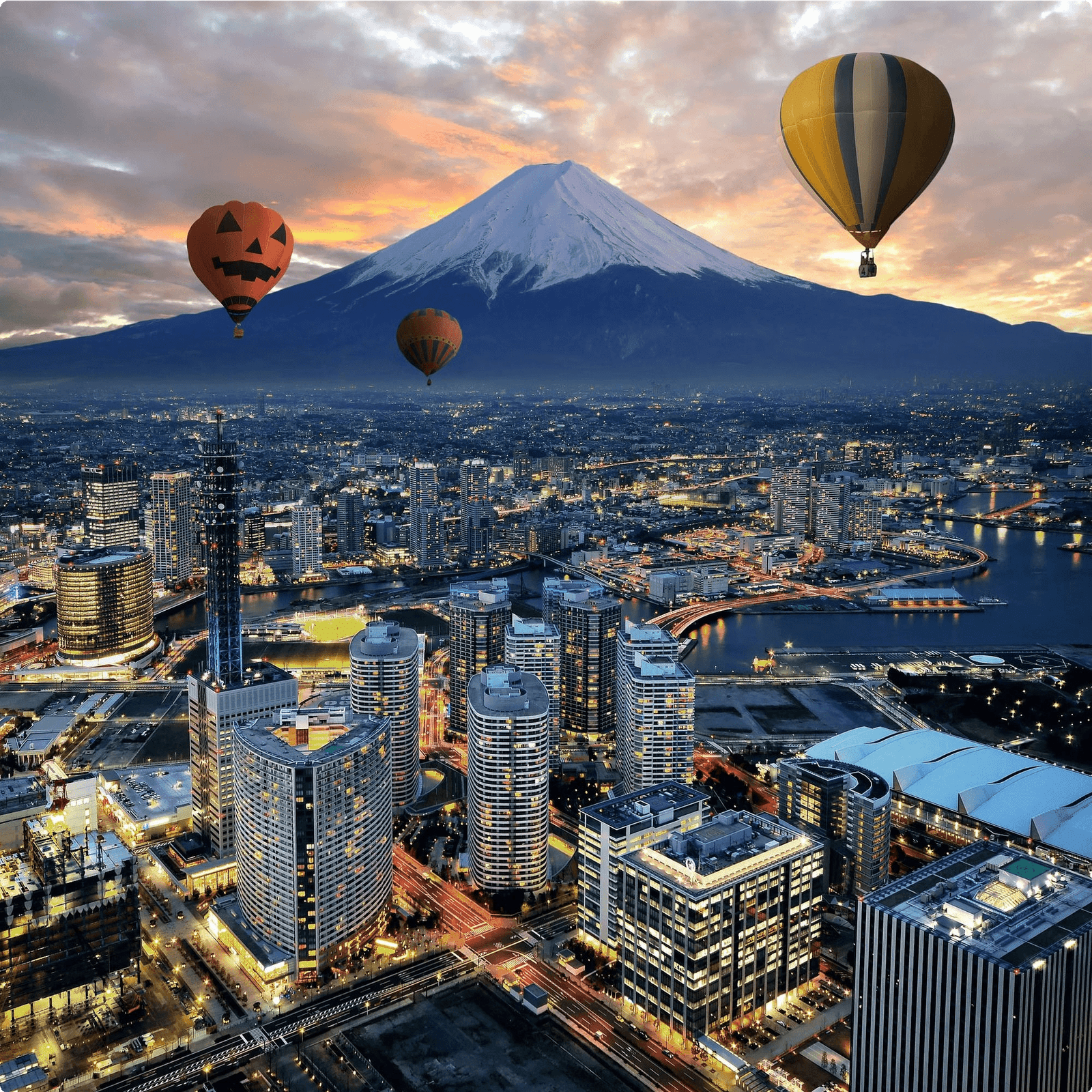
Tokyo, the cosmopolitan capital of Japan, is an extraordinary metropolis that seamlessly combines the essence of traditional culture with cutting-edge technology. It offers a rich tapestry of experiences, from world-class dining to an eclectic mix of art and entertainment. The city’s cultural diversity is evident in its fusion of old and new, making it a top destination for travelers seeking a unique and vibrant experience. With a diverse range of attractions, from serene temples to bustling modern districts, Tokyo is sure to captivate visitors with its allure and energy.
Best Hotels in Tokyo
The Tokyo Station Hotel: A luxurious hotel located inside Tokyo Station.
The Peninsula Tokyo: A 5-star hotel with stunning views of the city.
Mandarin Oriental Tokyo: A high-end hotel with a spa and panoramic city views.
Conrad Tokyo: A sophisticated hotel with a Michelin-starred restaurant and a stunning view of Tokyo Bay.
Park Hyatt Tokyo: A luxurious hotel with beautiful views of the city and Mount Fuji in the distance.
Best Restaurants in Tokyo
Sukiyabashi Jiro: A world-renowned sushi restaurant known for its exceptional quality and attention to detail.
Daiwa Sushi: Located in the Tsukiji Fish Market, this sushi restaurant offers incredibly fresh and delicious seafood.
Ippudo Ramen: A popular ramen chain known for its rich and flavorful broth.
Shin Udon: Serves delicious udon noodles with a variety of toppings and flavors.
Yakitori Alley: A street in Tokyo known for its numerous yakitori stalls, offering grilled skewers of chicken and other tasty treats.
Kyoto
Kyoto, a city in Japan, is known for its classical Buddhist temples, as well as gardens, imperial palaces, Shinto shrines, and traditional wooden houses. It’s also famous for formal traditions such as kaiseki dining and geisha performers.

One of the most iconic sights in Kyoto is the Fushimi Inari Shrine, a pathway of thousands of vibrant orange torii gates that wind through the hills to the sacred Mount Inari. Additionally, the serene Arashiyama district offers the iconic Arashiyama Bamboo Grove and the beautiful Tenryu-ji Temple.
Best Hotels in Kyoto
Planning a trip to Kyoto? Here are some of the best hotels you can stay at:
The Ritz-Carlton Kyoto – Experience luxury and elegance at this renowned hotel.
Hyatt Regency Kyoto – Enjoy a comfortable and stylish stay in the heart of Kyoto.
Four Seasons Hotel Kyoto – Indulge in luxury and immerse yourself in Japanese culture at this exquisite hotel.
Suiran, a Luxury Collection Hotel, Kyoto – Discover tranquility and serenity in this historic hotel nestled along the Hozu River.
Hotel Granvia Kyoto – Experience convenience and comfort at this centrally located hotel connected to Kyoto Station.
Best Restaurants in Kyoto
If you’re a foodie, Kyoto is a must-visit destination in Japan. Here are some of the best restaurants you can try:
Mizai – A Michelin-starred restaurant that specializes in Japanese kaiseki cuisine.
Kikunoi – Another Michelin-starred restaurant that offers a traditional Kyoto kaiseki experience.
Ishibekoji-Kakikubo – A restaurant that serves delicious soba noodles and other Japanese dishes.
Hyotan – A local favorite that serves homestyle Japanese dishes in a cozy atmosphere.
Nishiki Market – Not a restaurant, but a must-visit food market in Kyoto with a wide variety of local foods and snacks.
Osaka
Osaka is a vibrant and bustling city located in the Kansai region of Japan. It is known for its modern architecture, historical landmarks, and delicious street food. The city is often referred to as the “nation’s kitchen” due to its rich culinary scene and diverse dining options. Visitors to Osaka can explore iconic landmarks such as Osaka Castle, which offers stunning views of the city, and the lively entertainment district of Dotonbori, famous for its neon lights and vibrant nightlife.

Additionally, Osaka is a hub for shopping, with luxury boutiques and traditional markets offering a wide variety of goods. The city also boasts beautiful parks, such as the tranquil grounds of the Sumiyoshi
Taisha Shrine, providing a serene escape from the urban hustle and bustle.
Best Hotels in Osaka
Here is a list of the best hotels in Osaka:
The Ritz-Carlton, Osaka – A luxurious hotel known for its exceptional service and elegant accommodations.
The St. Regis Osaka – Offering luxurious rooms and stunning city views, this hotel provides a memorable stay.
InterContinental Osaka – A modern hotel with stylish rooms, multiple dining options, and top-notch amenities.
ANA Crowne Plaza Osaka – Known for its comfortable rooms, convenient location, and excellent hospitality.
The Rihga Royal Hotel Osaka – Offering spacious rooms, a range of dining options, and a relaxing atmosphere.
Best Restaurants in Osaka
If you’re visiting Osaka, make sure to try out these amazing restaurants:
Ryotei Hisago – A traditional Japanese restaurant known for its exquisite kaiseki cuisine.
Kani Douraku – Famous for its delicious crab dishes, Kani Douraku is a must-visit seafood restaurant.
Mizuno – A popular spot for Okonomiyaki, a savory pancake filled with various ingredients.
Kuromon Ichiba Market – Not a restaurant, but a vibrant food market offering a wide range of fresh seafood, fruits, and street food.
Yosuko Suisan – A sushi restaurant that serves top-quality sushi made with fresh ingredients.
Tsuruhashi Fugetsu – Famous for its mouthwatering okonomiyaki and other Osaka-style dishes.
Hiroshima
Peace Memorial Park
Hiroshima Peace Memorial Park is a beautiful and poignant tribute to the victims of the atomic bombing in 1945. It includes the iconic A-Bomb Dome and various memorials, museums, and monuments that convey a powerful message of peace and hope.

Himeji Castle
Although not in Hiroshima, Himeji Castle is a must-visit landmark located a short bullet train ride away. It is a stunning, immaculately preserved feudal-era castle and a UNESCO World Heritage site.
Itsukushima Shrine
Located on the island of Miyajima, just a short ferry ride from Hiroshima, Itsukushima Shrine is famous for its “floating” torii gate and serene beauty. It’s a magical place to experience traditional Japanese architecture and natural splendor.
Nagoya
Cultural Heritage
Nagoya is a city steeped in cultural heritage, with a blend of traditional and modern influences. It is home to ancient temples and shrines that offer a glimpse into Japan’s rich history and spiritual traditions.
Visitors can explore sites like the Atsuta Shrine, one of the most important Shinto shrines in Japan, and the Nagoya Castle, which is a symbol of the city’s samurai heritage.
Additionally, Nagoya is known for its thriving arts and crafts scene, with a strong tradition of ceramics and textiles. The city’s museums and galleries showcase exquisite pottery, intricate textiles, and traditional crafts that reflect the creativity and craftsmanship of Nagoya’s artisans.
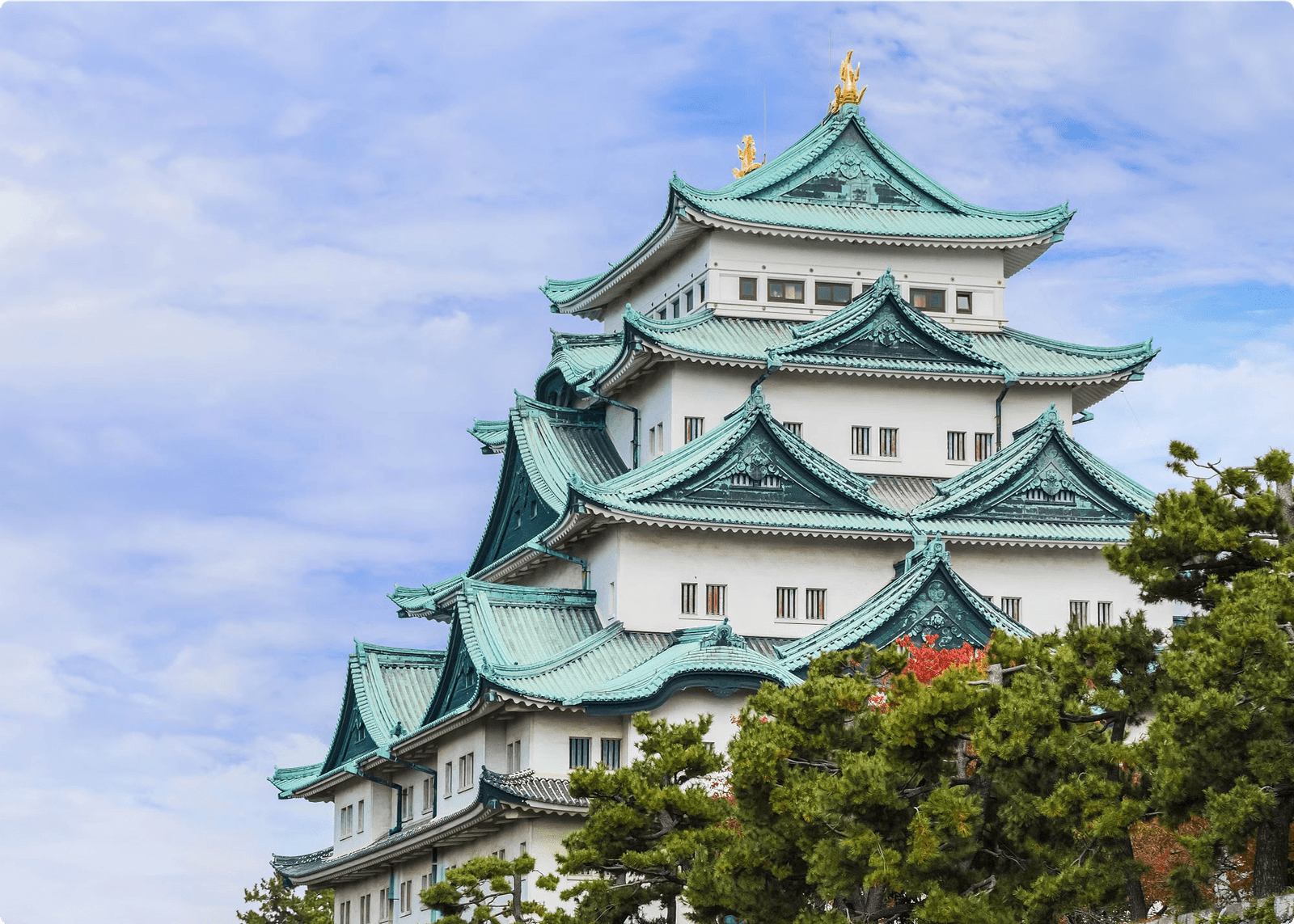
Modern Innovation
While embracing its cultural heritage, Nagoya is also a hub of modern innovation. It is one of Japan’s leading industrial cities and a center for technological advancement. The city is home to major automotive companies, including Toyota, and is known for its contributions to the automotive industry.
Moreover, Nagoya boasts futuristic architecture and design, with modern skyscrapers and innovative urban planning. Visitors can experience the juxtaposition of ancient traditions and cutting-edge technology, creating a unique and dynamic atmosphere in the city.
Sapporo
Sapporo Snow Festival
The Sapporo Snow Festival is a globally renowned event held in February, featuring intricate snow and ice sculptures and stunning light displays. Visitors from around the world flock to marvel at the breathtaking artistry and enjoy the festive atmosphere, complete with delicious food stalls offering local and international cuisines.

Sapporo Clock Tower
The iconic Sapporo Clock Tower is a symbol of the city’s history and architectural charm. Built in 1878, it serves as a reminder of Sapporo’s heritage and is a popular spot for visitors to admire the classic design and capture stunning photos of the surrounding scenery.

Sapporo Ramen Alley
Sapporo is celebrated for its delectable miso ramen, and there’s no better place to savor this beloved dish than in Ramen Alley. This culinary hotspot is lined with cozy eateries, each offering their own unique twist on the classic noodle soup, making it a must-visit destination for food enthusiasts.
Fukuoka
Fukuoka is a vibrant and modern city situated on the northern shore of Japan’s Kyushu island. It’s known for its rich cultural heritage, stunning architecture, and bustling urban atmosphere. The city is a perfect blend of ancient traditions and modern innovation, offering visitors a unique experience. Fukuoka is also famous for its delicious food, including the iconic Hakata ramen, a must-try for food enthusiasts.

Visitors to Fukuoka can explore historical temples and shrines, enjoy traditional tea ceremonies, and experience the city’s thriving arts and entertainment scene. With its beautiful parks, scenic waterfront, and lively festivals, Fukuoka has something to offer for everyone.
Yokohama
Yokohama is the second largest city in Japan and is located south of Tokyo. It’s known for its beautiful waterfront, bustling port, and futuristic skyline. The city offers a combination of modernity and tradition, with a rich history dating back to the opening of its port to foreign trade in the mid-19th century.
Yokohama boasts an array of attractions, from historic sites like the Sankeien Garden, a traditional Japanese garden with teahouses and ponds, to contemporary landmarks like the iconic Landmark Tower and the vibrant Minato Mirai waterfront district.

The city is also famous for its delicious cuisine, including an abundance of fresh seafood and international dining options. Visitors can explore the bustling Chinatown, the largest in Japan, or enjoy a peaceful stroll along the picturesque Yamashita Park. Yokohama is a cultural melting pot, home to various festivals, events, and museums, offering a diverse range of experiences for travelers.
Yokohama is a hub for shopping, entertainment, and sightseeing, making it a must-visit destination for anyone exploring Japan. Whether it’s admiring the stunning city views from the observation decks of towering skyscrapers, learning about maritime history at the Yokohama Maritime Museum, or indulging in a traditional tea ceremony, Yokohama has something to offer for every traveler.
Nara
Ancient Capital
Nara is a city in Japan known for its historical significance as the country’s first permanent capital. It is home to some of Japan’s oldest and most iconic temples and shrines, making it a must-visit destination for history enthusiasts.

Nara Park
The city is famous for Nara Park, where visitors can encounter free-roaming deer, considered to be the messengers of the gods in the Shinto religion. The picturesque park is a tranquil oasis and a great spot for relaxation and nature appreciation.
Todai-ji Temple
Todai-ji Temple, located in Nara, is home to the Great Buddha Hall, which houses one of the largest bronze statues of Buddha in Japan. The temple complex is an architectural marvel and a UNESCO World Heritage site.
Nara Cuisine
Nara’s culinary scene is renowned for local delicacies such as kakinoha sushi, a type of sushi wrapped in persimmon leaves, and sake made from the pure waters of the region. It’s a fantastic place to explore traditional Japanese cuisine.
Kobe
Kobe, a city in Japan’s Hyogo Prefecture, is famous for its premium Kobe beef. Raised according to strict tradition, the beef is known for its tenderness, flavor, and marbling. Visitors can enjoy this world- renowned delicacy in local restaurants, prepared by skilled chefs.
Kobe’s Harborland is a vibrant waterfront district with shopping, dining, and entertainment options. The area features modern architecture, scenic promenades, and the iconic Kobe Port Tower, offering visitors stunning views of the surrounding area.

Offering breathtaking panoramic views of Kobe and the surrounding region, Mount Rokko is a popular destination for nature enthusiasts. Visitors can take a cable car to the top, explore hiking trails, and relax in hot springs with stunning mountain vistas.
Best activities to do in Japan
Exploring Mount Fuji
One of the best activities in Japan is to explore the iconic Mount Fuji. Whether it’s climbing to the summit or enjoying the stunning views from nearby lakes and hot spring resorts, Mount Fuji offers a range of experiences for nature lovers and adventure seekers.

Visiting Hiroshima Peace Memorial Park
A visit to the Hiroshima Peace Memorial Park is a poignant and educational activity. It provides insights into the history of World War II and promotes peace and understanding. The park features the Atomic Bomb Dome, museum, and various monuments.
Exploring Himeji Castle
Himeji Castle, also known as the White Heron Castle, is a national treasure of Japan. Exploring its grand halls, defensive features, and beautiful gardens is a must for history enthusiasts and architecture admirers.
Best places to visit in Japan
Mount Fuji
Iconic and sacred volcanic mountain. located on Honshu Island, is the highest mountain in Japan and an iconic symbol of the country. It is considered a sacred site and has been a source of inspiration for
artists and poets for centuries. The perfectly symmetrical volcanic cone is a UNESCO World Heritage site and is surrounded by amazing natural beauty with five lakes nearby. Many visitors choose to hike
Mount Fuji, especially during the climbing season in summer. The breathtaking panoramic views from the top are a must-see for anyone visiting Japan, and the mountain’s serene presence has a place in the
hearts of both locals and tourists.
Hiroshima Peace Memorial Park
Historical site commemorating victims of the atomic bomb
Himeji Castle
Beautiful and well-preserved UNESCO World Heritage site
Arashiyama Bamboo Grove
Enchanting bamboo forest in Kyoto
Japan offers a plethora of captivating destinations, each with its own unique charm and significance. From the iconic and sacred Mount Fuji to the historical Hiroshima Peace Memorial Park, there are countless places to explore. The beautifully preserved Himeji Castle and the enchanting Arashiyama Bamboo Grove in Kyoto are essential stops for any traveler. These sites not only provide a glimpse into Japan’s rich history and culture but also offer breathtaking natural beauty that leaves a lasting impression on visitors.
Hiroshima Peace Memorial Park
Hiroshima Peace Memorial Park is a poignant and historically significant site in Japan, located near the epicenter of the atomic bomb explosion during World War II. The park serves as a memorial to the lives lost and the devastating impact of nuclear warfare. It features several monuments and structures, including the A-Bomb Dome, which remains largely unchanged since the bombing. Visitors can explore the Peace Memorial Museum to gain a deeper understanding of the events surrounding the bombing and its aftermath, as well as the efforts towards global peace and nuclear disarmament.

Beautiful photo of the A-Bomb Dome, a symbol of remembrance within the park Illustrative photo capturing the exhibits and artifacts within the Peace Memorial Museum
Himeji Castle
Himeji Castle, also known as White Heron Castle, is a stunning example of traditional Japanese architecture and design. Located in the Hyogo Prefecture of Japan, the castle is a UNESCO World Heritage Site and is widely regarded as the finest surviving example of prototypical Japanese castle architecture.

The castle complex includes over 80 buildings spread across multiple baileys, all surrounded by imposing stone walls and defensive features. Himeji Castle played a crucial role in the history of Japan and provides a fascinating insight into the country’s feudal period.
Arashiyama Bamboo Grove
Natural Beauty
The Arashiyama Bamboo Grove is a mesmerizing natural wonder located in Kyoto, Japan. The towering bamboo stalks create a serene and otherworldly atmosphere, making it a must-visit destination for nature enthusiasts and photographers alike.

Tranquil Setting
As you stroll through the bamboo forest, you’ll be enveloped in a sense of tranquility and peace. The sunlight filtering through the dense bamboo creates a calming ambiance, perfect for quiet contemplation and mindfulness.
Tourist Attraction
The Arashiyama Bamboo Grove is not only a natural marvel but also a popular tourist attraction. Visitors can immerse themselves in the ethereal beauty of the bamboo grove while exploring the surrounding area, which includes other stunning landmarks and cultural sites.
Tokyo Disneyland
Rides and Attractions
Tokyo Disneyland offers a wide array of thrilling rides and attractions for visitors of all ages. From classic favorites like “It’s a Small World” to heart-racing roller coasters like “Space Mountain,” there’s something for everyone.
The park also features unique rides exclusive to Tokyo Disneyland, such as “Pooh’s Hunny Hunt,” known for its innovative trackless system that creates an immersive and interactive experience.

Entertainment and Shows
Visitors can experience captivating live shows and parades throughout the day, featuring beloved Disney characters and enchanting performances. The entertainment options are diverse and cater to different interests, ensuring that guests are enchanted by the magical atmosphere of the park.
Themed Lands and Dining
Explore the intricately themed lands within Tokyo Disneyland, each offering a unique ambiance and culinary delights. From the whimsical Fantasyland to the futuristic Tomorrowland, guests can indulge in delicious cuisine that complements the immersive experience of each themed area.
Conclusion

As we conclude our exploration of Japan, we have delved into the diverse facets of this captivating country. From its rich cultural heritage to its vibrant economy and delectable cuisine, Japan offers a plethora of experiences for travelers. The Land of the Rising Sun beckons with its breathtaking landscapes, vibrant cities, and warm hospitality. Whether it’s the iconic Mount Fuji, the serene Hiroshima Peace Memorial Park, or the enchanting Arashiyama Bamboo Grove, Japan is a treasure trove of unmissable destinations. Plan your visit to immerse yourself in the harmony of tradition and modernity, and create unforgettable memories amidst the bustling streets and tranquil temples of this extraordinary nation.
2 Comments
Rabia Khan
Hi, my name is Rabia Khan from Yummy Guide inc.I work on a platform, Last Minute Japan that enables users to make last-minute restaurant reservations across Japan.
I recently came across your article and found it incredibly insightful. It inspired me to reach out, as I believe our platform aligns perfectly with the interests of your readers. Would you consider featuring Last Minute Japan within this article?
For more information, you can explore our affiliate program here: https://lastminutejapan.com/admin/affiliates
As part of this collaboration, we’d be happy to offer performance-based compensation for reservations made through your site. Payments can be sent conveniently via Wise or PayPal. To make the integration process seamless, you can include a simple hyperlink like this: https://lastminutejapan.com/en?aq=r001
This link is for our home page. We create pages for other restaurants as well. If you’d like to include links or buttons for other restaurants, I’d be happy to provide the necessary links.
We are confident this partnership will benefit your readers by introducing a simple and effective solution for dining reservations, while also enhancing the value of your content.
If this opportunity resonates with you, I’d be delighted to discuss further or assist with implementation. Please feel free to reply at your convenience. Thank you for your time and consideration. I look forward to hearing from you!
Best regards,
===
Rabia Khan
Yummy Guide Inc.
Last Minute Japan
Email:rabia@yummy-guide.com
Website: https://lastminutejapan.com
===
tlover tonet
Excellent read, I just passed this onto a friend who was doing a little research on that. And he actually bought me lunch as I found it for him smile Therefore let me rephrase that: Thanks for lunch!